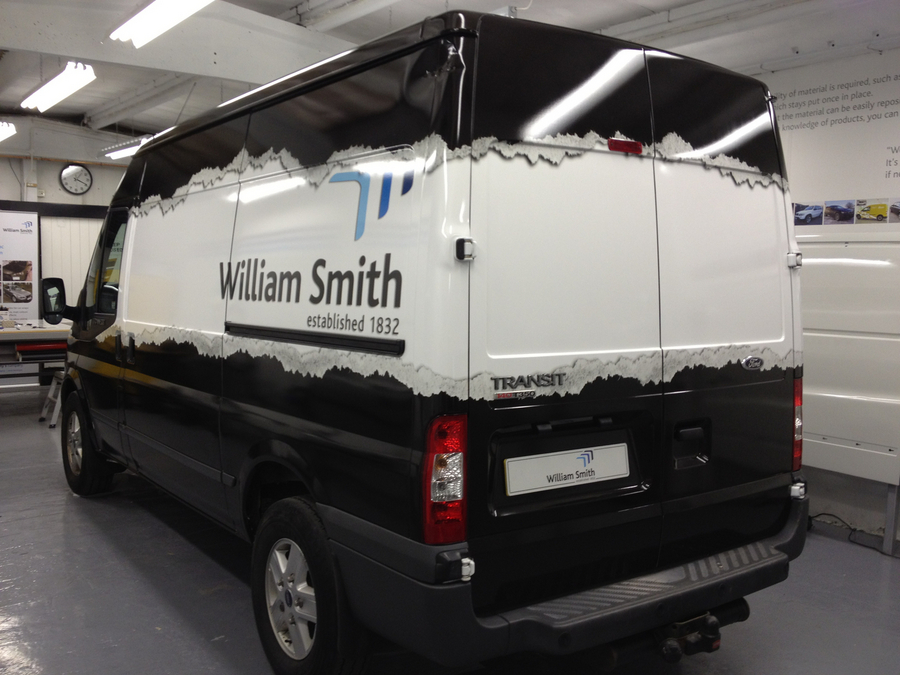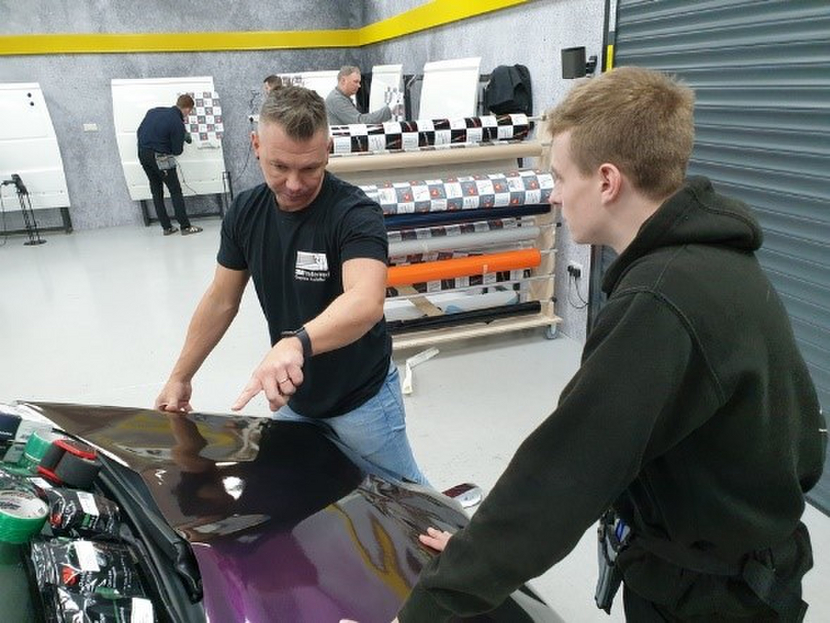Inspiration
Be inspired by learning about new ways in which you can support and drive your business forward by keeping up to date with the latest news and blogs from William Smith.

Vehicle wrapping has become increasingly popular as a cost-effective and creative way to advertise businesses or personalise vehicles. However, like any other skill, vehicle wrapping requires expertise and attention to detail to achieve optimal results. Today, we’ll explore some of the most common mistakes in vehicle wrapping and provide valuable insights on how to avoid them.
Inadequate Surface Preparation
One of the primary reasons for unsuccessful vehicle wraps is inadequate surface preparation. Skipping the crucial step of thoroughly cleaning and preparing the vehicle’s surface can lead to poor adhesion, air bubbles, and an overall unprofessional appearance. It’s essential to ensure that the vehicle’s surface is completely clean, free from dust, dirt, wax, or any other contaminants that may interfere with the adhesion of the vinyl film.
Solution: Take the time to wash the vehicle meticulously, using a mild detergent and a non-abrasive sponge or cloth. Afterwards, dry the surface thoroughly before proceeding with the vehicle wrap installation.
Insufficient Heat Application
Heat is a critical component in the vehicle wrapping process, as it helps the vinyl film conform to the curves and contours of the vehicle. Insufficient heat application can result in wrinkles, bubbles, and poor adhesion. Neglecting to apply heat properly is a common mistake that can compromise the longevity and aesthetics of the vehicle wrap.
Solution: Use a heat gun or professional-grade heat source to apply heat evenly to the vinyl film during the installation process. This will allow the film to stretch and conform smoothly to the vehicle’s surface, eliminating wrinkles and air bubbles.

Incorrect Cutting Techniques
Precise cutting is crucial for a flawless vehicle wrap installation. Cutting errors, such as jagged edges, uneven lines, or cutting into the vehicle’s surface, can significantly diminish the overall quality of the wrap. It’s important to use the appropriate tools and techniques to ensure clean and accurate cuts.
Solution: Invest in high-quality cutting tools and take the time to practice proper cutting techniques before working on the actual vehicle wrap. Use sharp blades, rulers, knifeless tapes, and templates to achieve precise and clean cuts. Take care to avoid cutting into the vehicle’s paint or bodywork.
Stretching and Overstretching
Stretching the vinyl film is necessary to accommodate the curves and contours of the vehicle. However, excessive stretching can cause the film to thin out, resulting in a compromised appearance and reduced durability. Overstretching can also lead to premature lifting or peeling of the wrap.
Solution: Strike a balance between stretching and overstretching when applying the film. Take care to stretch the film evenly, using heat when necessary to ensure a smooth and uniform finish. Practice proper stretching techniques, such as using a squeegee to guide the film during the installation process.
Ignoring Post-Installation Care
Even after a successful vehicle wrap installation, neglecting proper post-installation care can lead to unnecessary damage and premature deterioration. Failure to provide adequate maintenance can cause the wrap to fade, peel, or accumulate dirt and grime, diminishing its overall effectiveness.
Solution: Advise customers on the importance of proper post-installation care, including hand washing the vehicle with mild soap and water, avoiding abrasive cleaners or brushes, and refraining from high-pressure washing. Regularly inspect the wrap for any signs of damage or lifting and address any issues promptly to maintain the wrap’s longevity.
Vehicle wrapping can be an excellent marketing tool and a creative way to personalise vehicles. By avoiding common mistakes such as inadequate surface preparation, insufficient heat application, incorrect cutting techniques, stretching and overstretching, and ignoring post-installation care, you can achieve professional-looking wraps that are durable and visually appealing. Remember, attention to detail and patience are key in the vehicle wrapping process, so take the time to master the necessary skills and techniques to ensure a successful outcome.